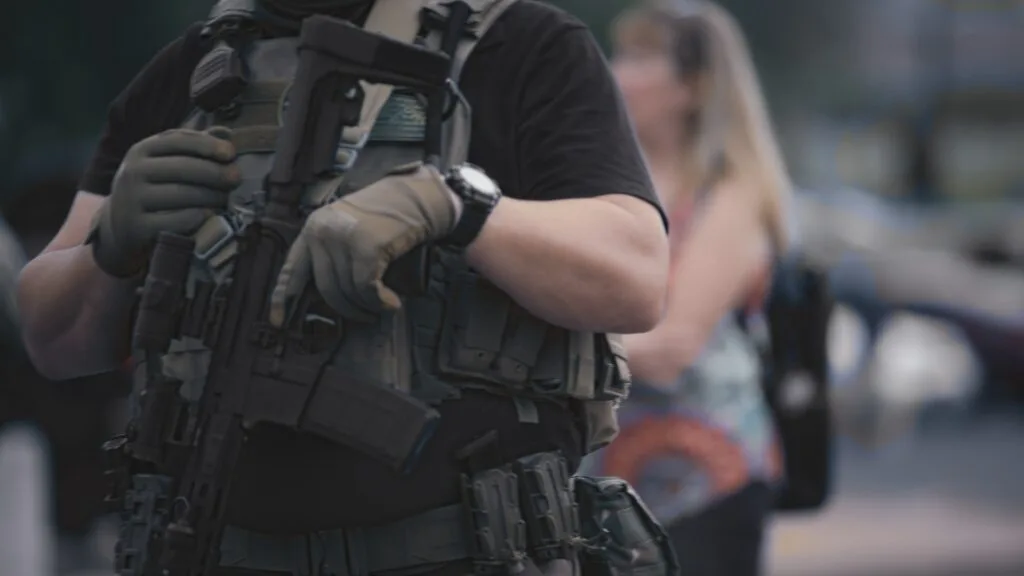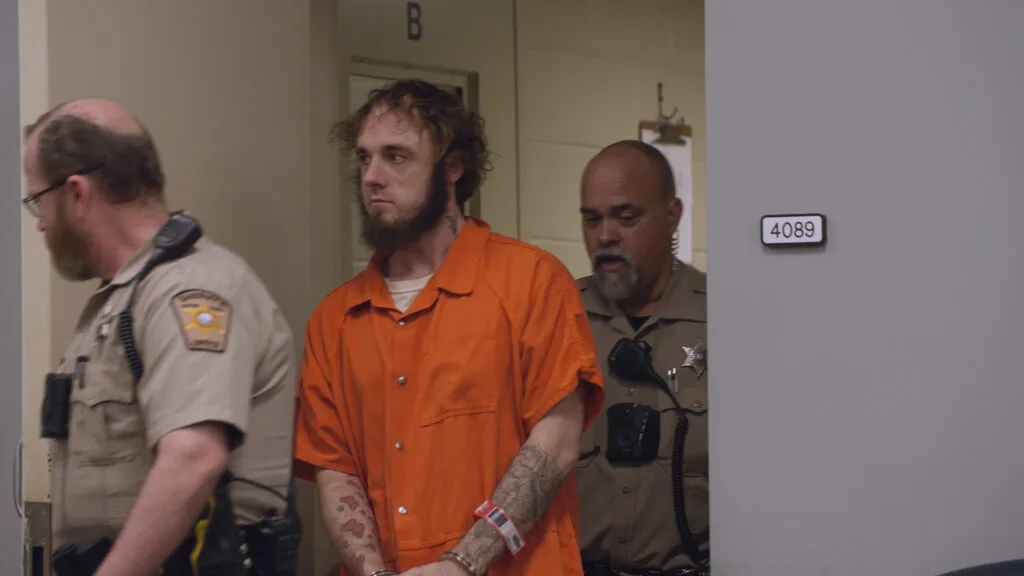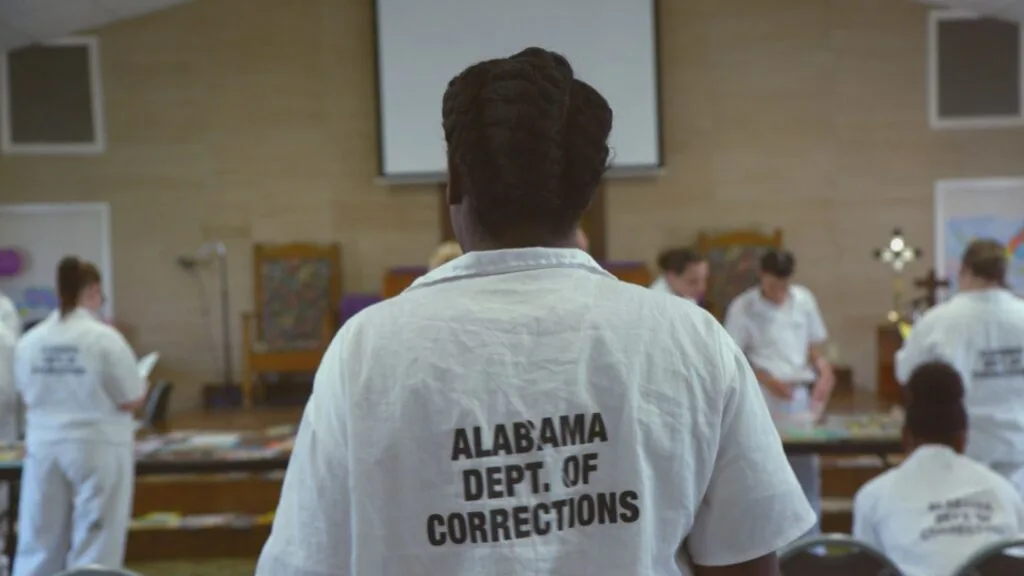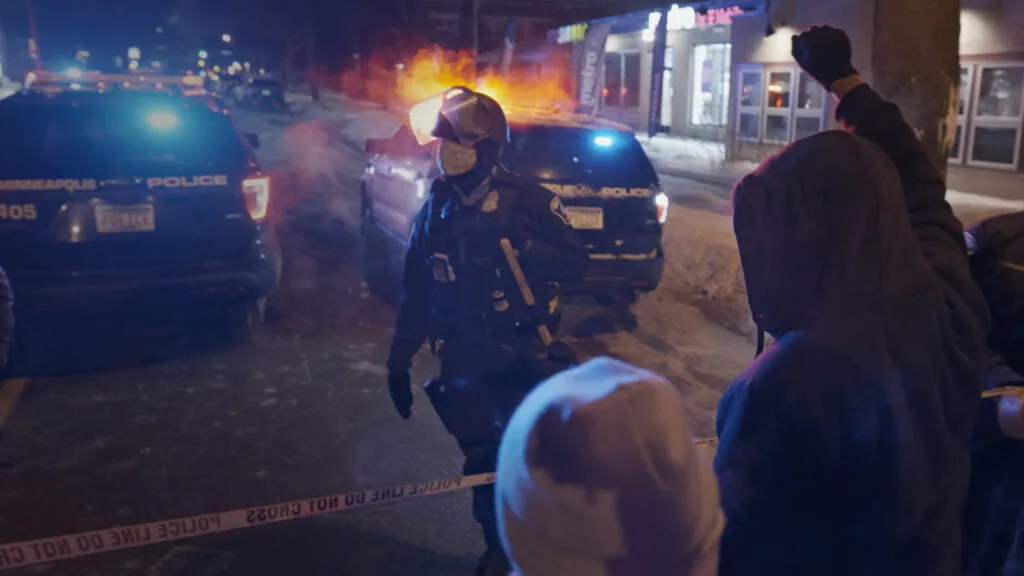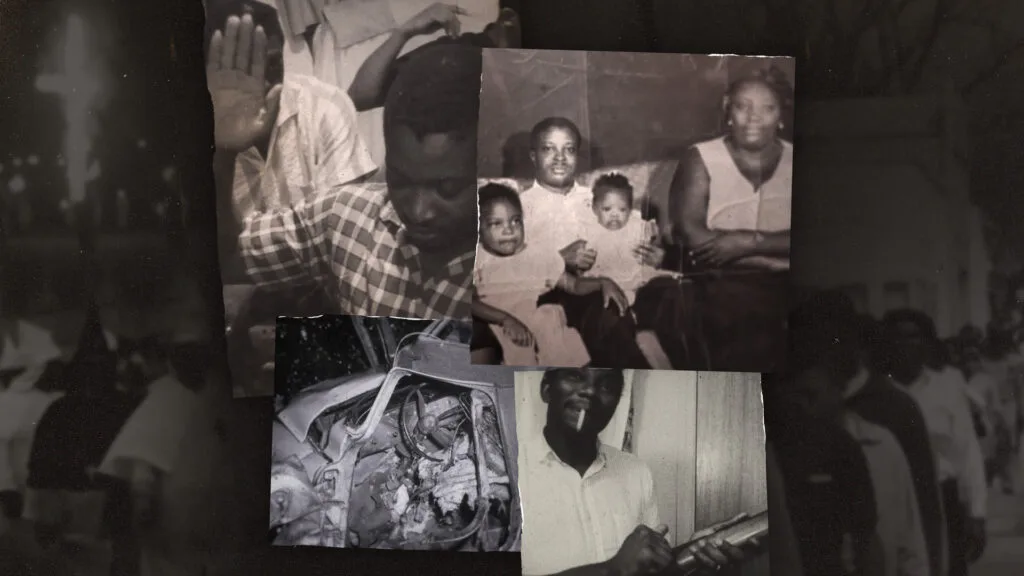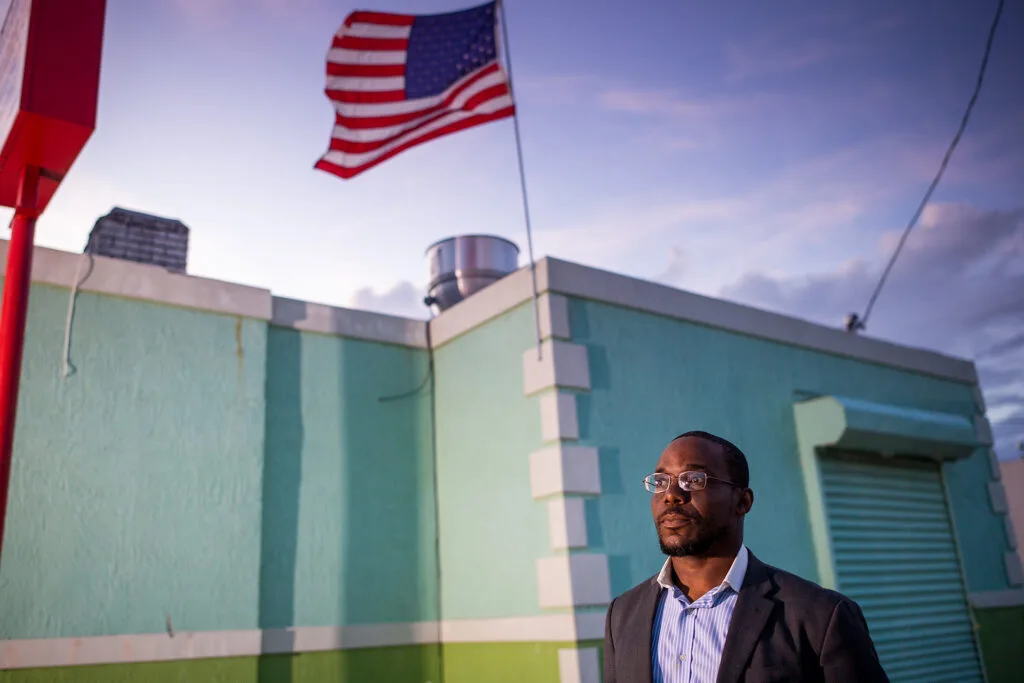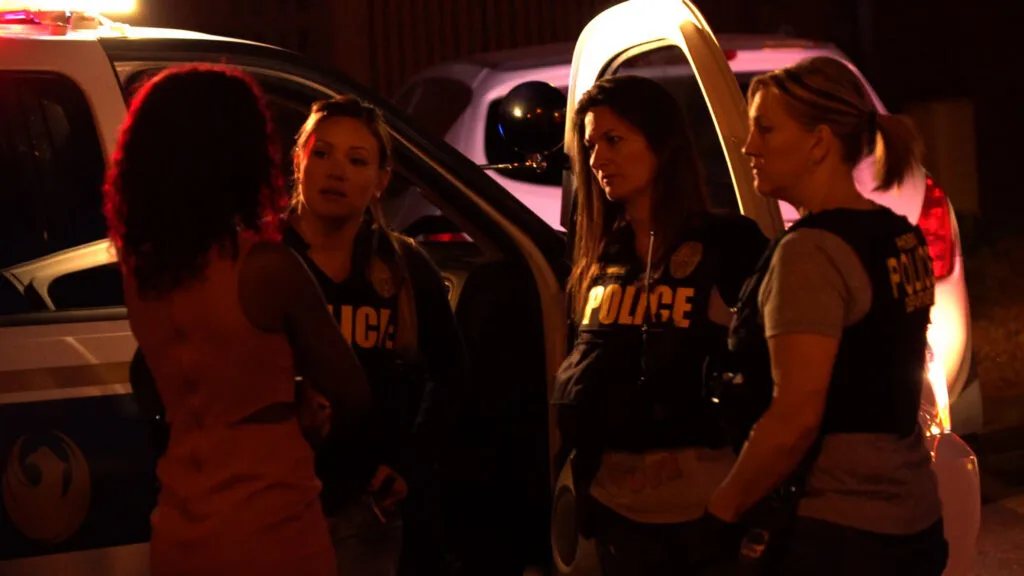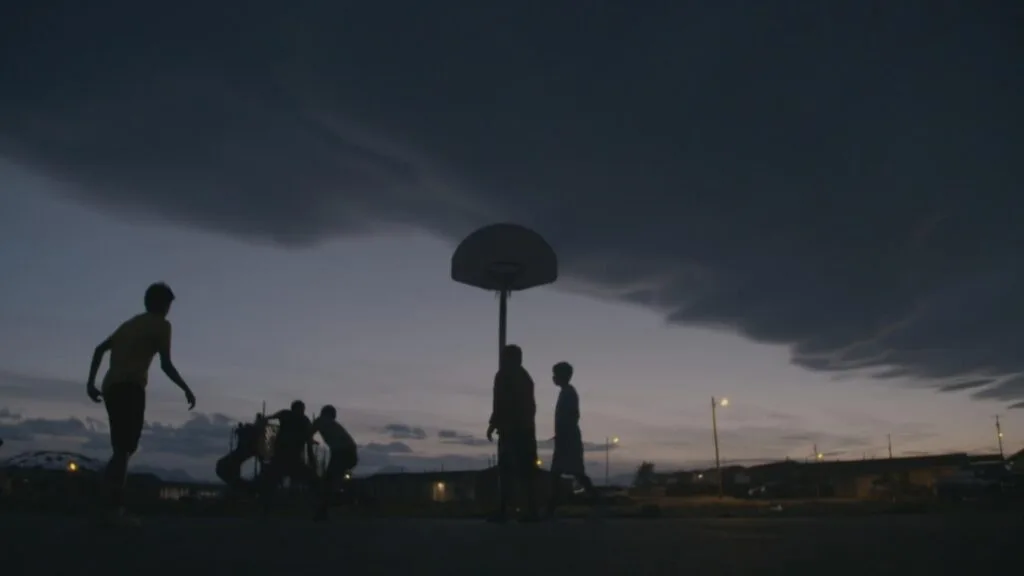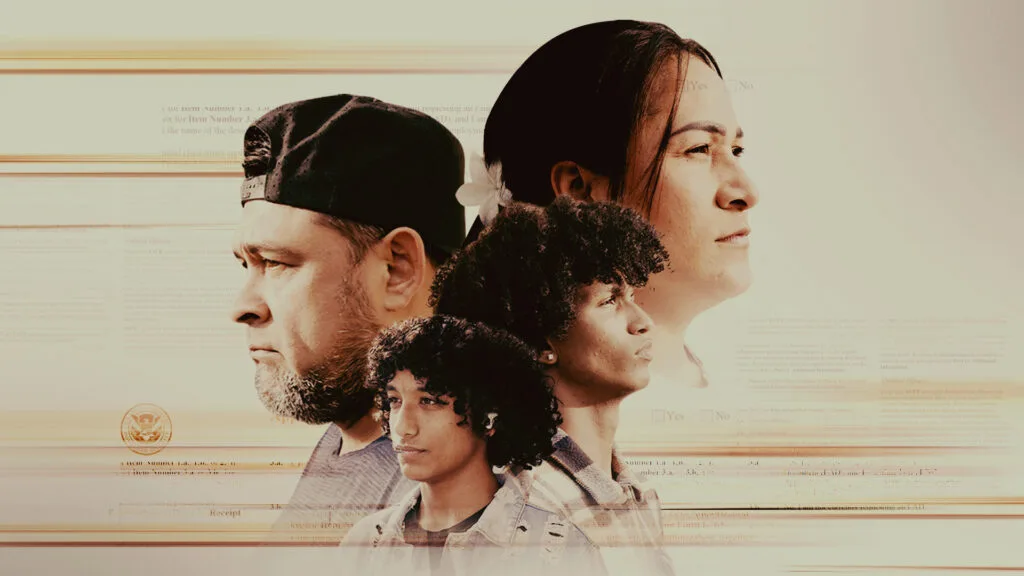Do Military Courts Play a Role in the Wake of January 6?
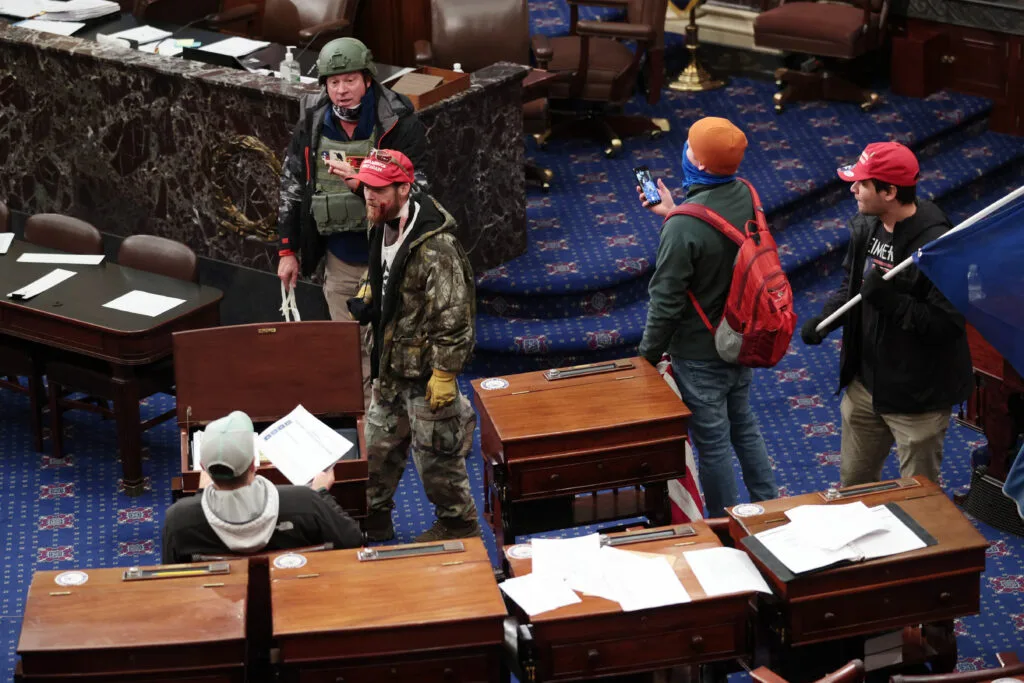
May 25, 2021
Share
Photos from January 6, 2021, show Lieutenant Colonel Larry R. Brock Jr., a 53-year-old former Air Force officer, standing in the Senate chamber of the United States Capitol, wearing a military-style helmet, a tactical vest and a camouflage jacket bearing a patch from his military service.
Brock was arrested on January 10 in Texas after his ex-wife recognized him in a photo and contacted the FBI. Of the 443 people charged so far in relation to the Capitol attack, he’s one of at least 49 individuals affiliated with the military, according to George Washington University’s Program on Extremism. He faces four federal charges and has not yet had a plea hearing.
While Brock might seem like a candidate for a military court-martial, he’s not. In fact, the military often doesn’t court-martial service members — a process that can lead to imprisonment, a punitive discharge and loss of pay and benefits, among other punishments.
As the Department of Justice continues to identify and charge current and former service members in relation to January 6 — a deadly day whose context is explored in the documentary American Insurrection, a joint investigation between FRONTLINE, ProPublica and Berkeley Journalism — military courts typically aren’t the go-to option. Here’s why.
The military can’t prosecute every current and former service member.
Court-martialing was originally created to handle cases where U.S. courts were not available, such as overseas, and acts as the judicial enforcement of the Uniform Code of Military Justice (UCMJ), or the set of criminal laws that govern the U.S. Armed Forces. The UCMJ applies to all active-duty members, all active-duty retirees, all active-duty Reservists, all members of the National Guard and all retired Reservists over the age of 60 who are either receiving a military pension or are hospitalized.
Retired Reservists younger than 60 automatically fall under civilian jurisdiction, according to Butch Bracknell, a former Marine officer and military lawyer known as a judge advocate general, or JAG. That category includes Brock, Air Force Lieutenant Colonel Malinda Singleton confirmed to FRONTLINE.
Although Department of Defense policy says service members “must not actively advocate supremacist, extremist or criminal gang doctrine,” the UCMJ does not explicitly name membership in an extremist group as a punishable crime. Instead, under Article 143, the UCMJ can charge service members for engaging in any behavior that violates “good order and discipline” within the ranks, such as battery, assault or communicating a threat — if those actions compromise military operations.
The DOD acknowledged that participation in events such as January 6 could compromise the military’s reputation by undermining “the trust Americans have for those that serve,” Commander Candice Tresch, a Department of Defense spokesperson, wrote in an email to FRONTLINE.
Even when the military could prosecute, it may defer to civilian courts.
The military isn’t required to pursue cases against service members, according to two former JAGs and two military law experts who spoke with FRONTLINE. Instead, the military can defer to federal or local prosecutors, depending on whom all parties agree is “best situated to handle the case,” according to a DOJ spokesperson and confirmed by representatives of the Air Force, Navy, Marine Corps, Coast Guard and Army.
All experts with whom FRONTLINE spoke agreed that federal courts typically have more resources to investigate and prosecute efficiently. In practice, that often results in prosecution by the DOJ, as in the cases of all 49 individuals with military ties charged so far in relation to January 6.
“When you really get down to it, push comes to shove, do we want these guys successfully prosecuted?” asked Victor Hansen, a retired Army lieutenant colonel and JAG who is now a professor at New England Law Boston, of the January 6 riot. “Who has the tools, who has the know-how, who has the experience, who has the resources to actually succeed with bringing a prosecution?”
But a civilian case doesn’t preclude the military from pursuing its own charges.
“We are all committed to holding everyone involved accountable, by any available means,” Commander Tresch of the DOD told FRONTLINE.
Military courts work differently from civilian courts.
Military law experts told FRONTLINE that military prosecution lacks the rigor of impartial, independent oversight and should be used as a last resort.
“You don’t get those major protections that are hardwired into the Constitution,” said Eugene R. Fidell, a senior research scholar at Yale Law School and a former president of the National Institute of Military Justice, a nongovernmental organization. “If you’re tried in a civilian court, you get a trial before federal district judges. You can’t be tried for a felony unless a grand jury indicted you. You get a right to a unanimous, 12-person jury.”
What’s more, in a court-martial, “except in capital cases, the jury doesn’t have to be unanimous,” Fidell said. “The members of the jury are picked by the commanding officer, not an independent jury commissioner. That’s something we should have reformed a long time ago.”
A case challenging the constitutionality of court-martialing for crimes committed after retirement is currently under review by the U.S. Court of Appeals for the Armed Forces, or CAAF, the military’s highest appeals court and last stop before the U.S. Supreme Court. The CAAF has not yet decided whether to hear the case.
Extremism within the ranks: what’s next.
In the wake of January 6, the military is under increased pressure to check extremism within the armed forces.
Earlier this year, FRONTLINE and ProPublica identified more than 20 current and former U.S. service members who have connections to the Boogaloo Bois, an antigovernment extremist movement — including one Air Force sergeant covered in a related story with Berkeley Journalism’s Investigative Reporting Program. Last month, a USA Today investigation found that, over two decades, the Navy and Marines had discharged 13 people under investigation for white supremacist activity without formal prosecution.
Following a DOD “stand down” order for all branches to hold a one-day training to address extremism, Defense Secretary Lloyd J. Austin announced in April that the DOD would commission a study on the scope of internal extremism and would establish a working group to implement recommendations. Austin also said the DOD will update its definition of extremism among military personnel.
But when FRONTLINE asked what a new definition was intended to do, the DOD did not address the question. Nor did the DOD address whether it was considering changes to the UCMJ. Currently there is no public timeline for when the definition will be updated.
Some believe a tougher stance is necessary to eradicate radicalization within the military. Kyle Bibby, a former Marine Corps infantry captain and now national campaigns manager at Common Defense, a veteran-led political activism organization, told FRONTLINE: “The military needs to be just as aggressive going after this just as they would any other enemy of the United States.”
Watch American Insurrection in its entirety below.

Related Documentaries
Latest Documentaries
Related Stories
Related Stories
Explore
Policies
Teacher Center
Funding for FRONTLINE is provided through the support of PBS viewers and by the Corporation for Public Broadcasting. Additional funding is provided by the Abrams Foundation; Park Foundation; the John D. and Catherine T. MacArthur Foundation; and the FRONTLINE Trust with major support from Jon and Jo Ann Hagler on behalf of the Jon L. Hagler Foundation, and additional support from Koo and Patricia Yuen. FRONTLINE is a registered trademark of WGBH Educational Foundation. Web Site Copyright ©1995-2025 WGBH Educational Foundation. PBS is a 501(c)(3) not-for-profit organization.
